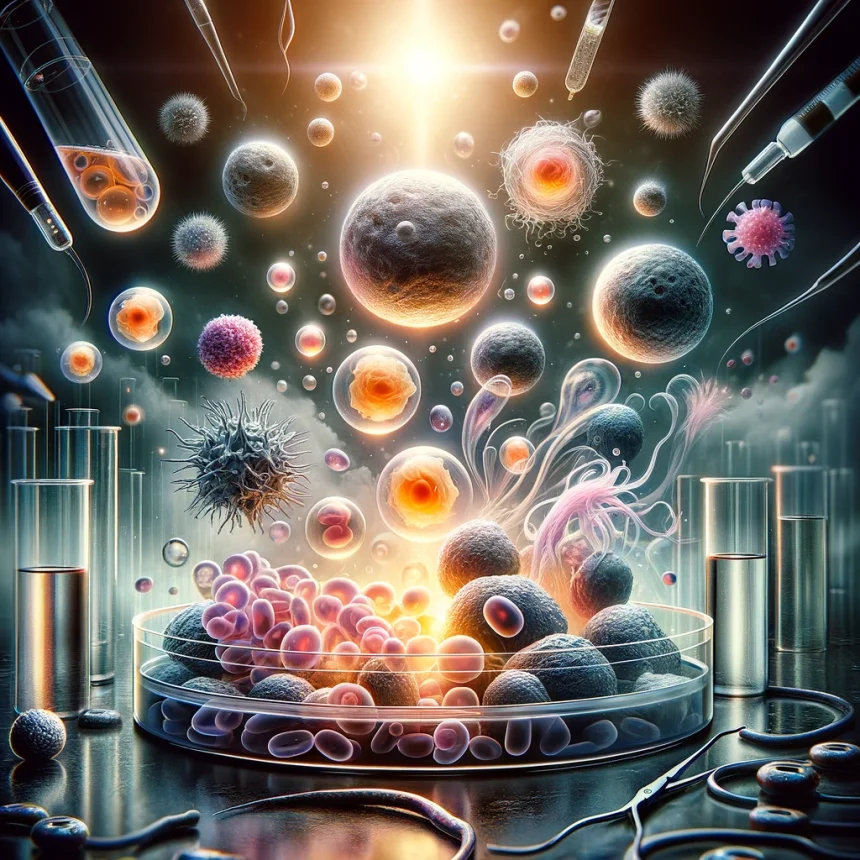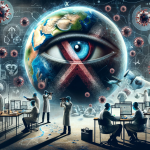In the forefront of biomedical innovation, the realm of stem cell research shines as a luminary beacon, heralding new possibilities for healing and regeneration. Within this domain, stem cells nurtured in laboratory settings emerge as architects of medical miracles, wielding the power to mend broken tissues, confront neurodegenerative maladies, and even architect new organs. Yet, beneath this sheen of promise, a paradoxical shadow looms, casting a pall of concern over the intertwining of stem cells’ inherent virtues with the specter of carcinogenic peril.
The Regenerative Odyssey
Envisioned as the quintessential building blocks of life, stem cells stand as the progenitors from which the tapestry of specialized cellular entities is woven. Given the right cues, these primordial units embark on a transformative journey, morphing into cells with distinct roles, a process celebrated as differentiation. This alchemical capability of stem cells is the cornerstone upon which the edifice of regenerative medicine is built, aspiring to resurrect the vestiges of vitality in ailments ranging from Parkinson’s affliction to spinal cord traumas and cardiac tribulations.
The Alchemy of Lab-Created Stem Cells
The genesis of stem cells within the confines of laboratory glassware involves the alchemical transmutation of mature cells back to a state of embryonic-like pliability, known as induced pluripotent stem cells (iPSCs), or the nurturing of embryonic stem cells (ESCs) in nurturing cultures. This arcane art enables the infinite conjuring of stem cells for the dual purposes of probing the mysteries of biology and crafting therapies, sidestepping the moral quandaries entwined with embryonic sources.
The Shadow of Malignancy
The very essence that bestows stem cells with their regenerative prowess—their phoenix-like capacity for rebirth and metamorphosis—also harbors a dark twin. This unchained propensity for growth mirrors the chaotic dance of cancerous cells, unmoored from the checks and balances of normal growth. Alarm bells ring when lab-cultivated stem cells, perhaps marred by the scars of their genesis, veer off course, potentially spawning neoplastic growths, termed teratomas, upon their reintroduction into the human crucible.
The Equilibrium of Safety and Breakthrough
In this high-stakes gambit, the scales of safety and innovation are delicately balanced. The crucible of stem cell research is thus sanctified by stringent safety rites and the oracles of preclinical prognostication. Through the arcane practices of genetic scrutiny and the guiding hand of controlled differentiation, the specter of tumorigenicity is exorcised, ensuring the benign passage of stem cells from the ether of research to the corporeal realm of therapy.
The Horizon of Hope and Caution
Despite the labyrinthine challenges that beset this path, the beacon of stem cell therapy, with its luminescent promise, remains undimmed. The quest continues, with sages and scholars seeking to refine the alchemical processes that birth stem cells, aiming to sheath the sword of cancer risk and clothe these therapies in the armor of safety. Moreover, the enigmatic dance between stem cells and their shadowy doppelgängers, cancer cells, offers a rich tapestry of knowledge, weaving new strata in the eternal battle against malignancy.
Epilogue
Thus, the odyssey of lab-cultivated stem cells, from the primordial soup of petri dishes to the sanctum of human healing, is fraught with both the luminous promise of regeneration and the shadowy whispers of peril. As the fellowship of science ventures forth through this terrain of wonder and wariness, the twin beacons of regenerative potential and vigilant safeguarding guide their passage. In this continuing saga, the hope endures that stem cell therapies will not only redefine the contours of medicine but also erect a bulwark against the darkness of cancer.








